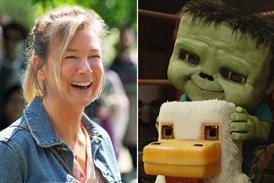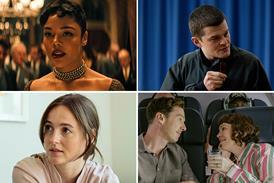
The internationally-renowned Catalan filmmaker Albert Serra has a film in competition at the San Sebastian International Film Festival (SIFF) for the first time.
Afternoons Of Solitude is an immersive documentary about the Peruvian-born bullfighter Andrés Roca Rey. Edited from 700 hours of material, the film focuses on the rituals surrounding this ancient tradition, the moments entering the ring, the fight, the killing of the bull, the ensuing conversations when the fight is over.
The film is produced by the filmmaker and Montse Triola’s Barcelona-based Andergraun Films with Lacima Producciones, Idéale Audiences, Rosa Filmes; Films Boutique is handling sales.
Serra’s previous film Pacification screened in competition at Cannes in 2023 and went on to win two César awards - for best actor for Benoît Magimel and best photography for Artur Tort.
The director talks to Screen about why he wanted to make a film about bullfighting, his take on the potential reaction to the film and updates on his next film, to be made in English with US stars about relations between Russia and the US on the eve of the Ukrainian war.
How much did you know about bullfighting before tackling Afternooons Of Solitude?
Enough I think, to understand it. When I was little I went to see some corridas several times and decades later I went again. I studied Hispanic literature at university and that also gave me an understanding. But I don’t consider myself an expert, nor was I trying to convey an established point-of-view. The idea was to make a documentary and search for something new, a new perspective, images that made us discover something we did not know about this world.
There have been lot of discussions in San Sebastian about whether the film is for or against bullfighting. Do you prefer the audience to draw their own conclusions?

We had three camera operators shooting the footage we worked with in the edit. There were no preconceptions. I worked with the images I found interesting, that taught me something I did not know.
There is no aesthetic gloating in violence. There is truth, like when you witness life fleeing the body of the dying bull as you look into its eyes. Bullfighting is a reminder of the cycle of life and its transcendence.
Cinema was key to make sense of it. You can see with the camera in a way the naked eye will never show you. The degree of concentration and objectivity that a camera can offer is unique. It can reveal what otherwise remains invisible. I have always had this in mind in my fiction features, it’s the same method behind the documentary.
You focus on bullfighter Andrés Roca Rey. What did he think when he saw the film?
He saw an early edit. It’s difficult to say what he thought of it. He is quite shy and introverted, as you can see in the film, and of course seeing yourself with the camera up so close on the big screen is not easy. We would feel the same way if it happened to us. Cinema amplifies everything, what you like and what you don’t, specially in an honest and serious film like this. I think he and his crew were a bit concerned about the more violent shots. They feel that could upset bullfighting aficionados.
There is violence, there is ritual, but there is also humour, particulaly in the conversations of the bullfighter’s entourage.
I need that in all my films. I love the moment when Andrés Roca Rey says, “I was very lucky” [after a serious bulfighting accident when the bull pins him to the barrier of the ring that he miracoulously escapes with no serious injuries]. And then his manager replies, “You will always have luck because you deserve it”.
But this is a kind of humour that does not make things easier for the audience.
How do you think international audiences will react?
I have a lot of festivals lined up. Like Pedro Almodóvar, I’m going to the New York Film Festival, Canada, Japan, many countries in Europe. I think international audiences have more of an anthropological gaze on bullfighting, there isn’t the same polemical take as there is in Spain.
You are a great believer in European co-productions.
Indeed, because it’s better to widen the sources of financing, particularly for non-mainstream films. I am a fully independent filmmaker, and have freedom to explore. It’s also a good way to ensure distribution in the countries involved in the production.
What is the latest news on your next fiction feature, Out Of This World?
We are shooting early next summer. It will be shot in English. Our company Andergraun Films (Spain) is producing with Les Films du Losange, Ideale Audience Group (France), Pandora Film (Germany), Rosa Filmes (Portugal) and Forma Pro Films in Latvia, because we will be shooting there. We will be using Latvian locations to stand in for Russia, since we cannot shoot there.
What is the film about?
The historical rivalry between the US and Russia, set at the start of the war in Ukraine. I am interested in the idea of Russia, and its role in world politics. Out Of This World is about Americans trying to negotiate certain things with the Russians. The Americans are played by well-known Hollywood actors. We are still closing the cast so I cannot confirm any names yet.
Has the plan to work with American actors changed the way you write?
Not really, but we’ll see when we shoot. The true challenge of this film is seeing if my style, my way of working, fits with Hollywood actors. I think it can work and that it will be original for them. My style won’t change.
























No comments yet